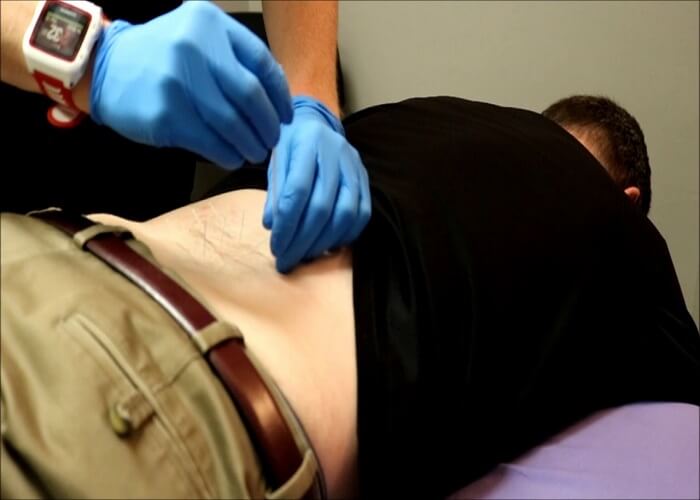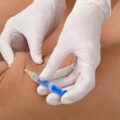Chemonucleolysis with Ozone
On the following pages you will find all the relevant informations regar-ding Ozone therapy which is offered at our institute.
Disc prolapse is one of the most known and feared causes of back pain though not the most common cause.
Intervertebral disk anatomy and Disc prolapse
The intervertebral disc is normally held intact by a fibrous ring (annu-lus fibrosus). In cases of increased one-sided stress or burden, it leads to gradual degeneration of this fibrous ring and the jelly-like nucleus pul-posus can prolapse into spinal canal. This is known as disc protrusion (when minimal) or disc prolapse (when prominent) or disc sequestration (when dislocated up or downn). This disc protrusion or prolapse can compress the adjacent nerve root leading to typical, acute radiating pain (lumboischialgia) which in cases of lumbar vertebra can extend right down to the feet on the affected side. This prolapse could finally lead to complete blockade of the vertebra where even minimal movement can lead to severe pain. In severe cases with compression of nerve roots it can also lead to sensory disturbances, weakness and also rarely paralysis.
Not all cases of disc prolapse are associated with pain. In somecases the patient has no or only slight pain. Research studies where routine back scans have been done on a large number of people have shown that some people have a prolapsed disc without any symptoms. It is thought that symptoms mainly occur if the prolapse causes pressure on or irritation of a nerve. This does not happen in all cases. Some prolapses may be small, or occur away from the nerves and cause minor or no symptoms.
In cases of symptomatic disc protrusion or prolapse one has to decide the therapy suitable to the patient and his pain symptoms. Before any inva-sive treatment of vertebral disc conditions one should try out the medical and physiotherapeutic measures. In cases of unsuccessful medical and physiotherapy following are some of the treatment options available:
Minimal invasive procedures are associated with a very short hospital-stay. These methods offer the advantage of repeatability and the option of traditional operative treatment can still be pursued in unsuccessful cases.
The Procedure
Positioning of patient prone on the CT-examination table.
Local anaesthesia at the region of entry or puncture.
The target intervertebral disc is visualised using C-arm x-ray and CT.
The disc is then entered using a thin needle.
Injection of Ozone / Oxygen mixture.
Finally the needle is pulled out while simultaneously injecting the ozone-oxygen mixture in the bone space through which the nerve root passes together with cortisone and local anaesthesia.
After the intervention
You can start moving slowly after 6 hours of treatment (like walking a small distance).
You must relax your body for a minimum of 4 weeks, especially avoid lifting of heavy objects over 5 kgs. You should also avoid running and long drives for the first 3 days. Additionally physiotherapy forms an im-portant part of the treatment regimen for long-standing results.
References
http://www.patient.co.uk/health/Prolapsed-Disc-Slipped-Disc
http://radiologie-uni-frankfurt.de/content/e6796/e13478/e13957/e13958/index_eng.html






